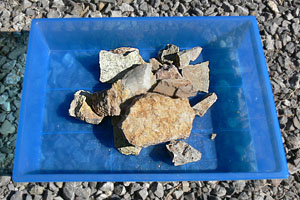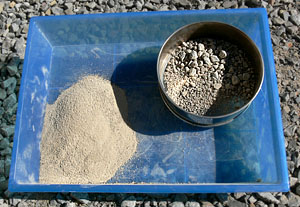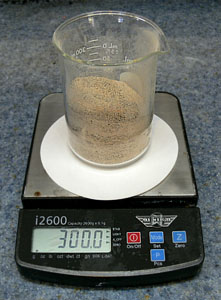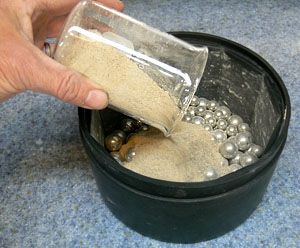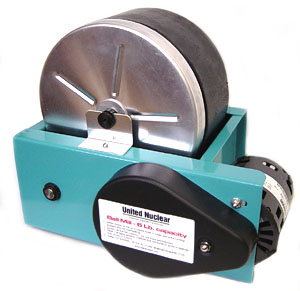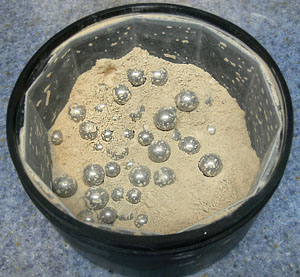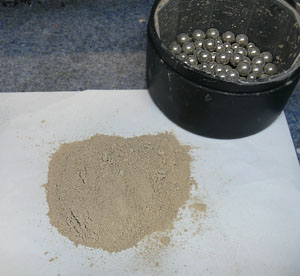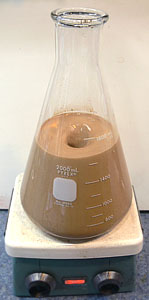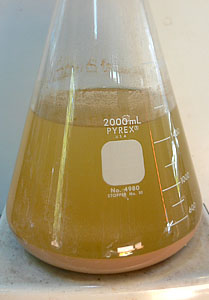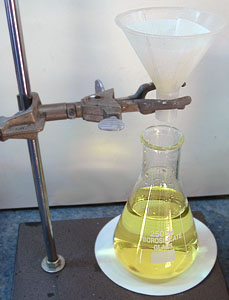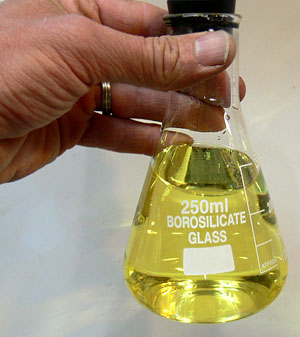How to Build a Radio/Drone Jammer
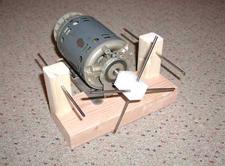 Radiohax
RadiohaxSpark gap transmitters are the oldest type of radio transmitter made by man. They were first used around 1888 and remained legal until the 1920s when their use became greatly restricted. World War II delayed their complete ban outside of emergency communications for a few years. Now the only way to use them legally is inside a faraday cage. They operate as jammers for the same reason they were banned, they take up a lot of the radio spectrum.
A spark gap transmitter is fairly simple. Send a high voltage current through an air gap, when the resistance of the air breaks down a spark will cross the gap. When this happens electromagnetic radiation is emitted. You can test this in your house fairly easily. Turn on some speakers so they are powered but nothing is coming out of them. Computer speakers that are on will work as will a stereo set to CD or tape with no CD or tape playing. Flip your room lights on and off in rapid succession, you should hear a clicking from the speakers. The clicking is RF energy that is being picked up from the light switch.
Effective Range
The range of this type of jammer is based on a few properties.- Antenna resonance
- Field strength
- Modulation
- Terrain
The field strength, or amount of RF energy given off, is directly related to the difference in voltage between the two states. With the type of transmitter we are making one state will be totally off or 0 volts while the other will be on or the full voltage. It is not required to switch between an off and on state you may switch between a lower and higher voltage as well. The higher the input voltage the stronger the RF, the more range you will have. You have normal free space losses that all radio transmissions have which means that in order to double the effective range you will have to apply 4 times more power.
Another consideration is the modulation that is being utilized. Modulation also includes some of the data that is carried over that mode such as digital data. FM signals for example will lock onto the strongest relative signal from the receivers point of view, a weaker but closer signal will appear stronger than a further but more powerful signal due to free space losses. FM can flip back and forth quickly between two stations that have a nearly equal signal strength at the receivers antenna and make it appear like it is mixing the two stations, the reality is that it is not. SSB will mix the two signals, while you may hear noise in with the desired audio you can still hear the desired audio. Spread spectrum will tolerate the most noise.
Digital systems can be jammed even if the underlying modulation is not by introducing noise the decoding circuitry in the radio may not be able to decipher the bits correctly and reconstruct the message. This can result in heavy packet loss on that system rendering it unusable. Many digital systems are more sensitive to noise than their less sophisticated counterparts. Many digital systems are either FM or spread spectrum. FM is more often used for longer range applications.
The specific type of system that you are trying to jam is important to know as it will tell you how much power you have to have and at what distance. The best way to determine what is suitable is to get a similar system and see how far it will work from the spark gap transmitter at a given power.
Terrain includes buildings, trees and other objects that the radio signals will interact with. If you stash the spark gap transmitter in a metal box the signal will be attenuated compared to that same transmitter being placed in an open field. Elevation can also influence the distance the signal may go.
Construction
The construction of this type of spark gap generator is fairly simple. You should be able to get everything for under $50 new, used items may be even less expensive. You will need the following items:- high voltage source
- batteries
- small bit of wood to mount things on
- small motor
- a few nails or screws
- wire
The battery should be suitable to run your high voltage source and the small motor. A motorcycle battery is smaller but will go dead faster than a larger car battery.
The wood should be large enough to let you mount the ignition coil, motor and screws on. This can be any scrap wood or similar non-conductive material that you can find. It should be rigid enough that the components will not just fall apart although it does not have to be that strong. It’s purpose is just to hold everything together. A block of cheese or dried mud would work if that is all you have available.
The small motor can be anything from a vibrator out of an old pager or mobile phone, an electric fan or one you may find at an electronics or hobby store. It just has to have a shaft that allows mounting of a cross member onto.
The first step will be to assemble the motor so that it will function the way you want. When mounting the cross member you should make sure that it is insulated from the rest of the motor either by a plastic shaft or a plastic mounting block. The rod can be a nail although you will want it equidistant from the center.
Now prepare your antenna. This is a length of wire cut to 1/4 wavelength of the desired target frequency. If you do not know the target frequency you can just make some guesses. You can also connect multiple antennas together to cover various frequencies. Remember you will have RF emitted on all frequencies it will just be more powerful on the frequencies that the antenna is resonant for. Mobile phones are about 0.5 inch antennas and older police radios are 2.86 inches. For a good spectrum coverage if you make antennas of 0.5, 1.0, 1.5, 2.0, 2.5 and 3.0 inches most of the usable spectrum will be covered.
Connect the antenna(s) that you made to one of the stationary side rods. To the other end you will need to connect a ground. This can be to a metal water pipe in your house or to a rod driven into the ground. If you do not have a ground the radio will still transmit although it will be at a slightly lower power.
Now connect the output of the ignition coil to the stationary rods on either side of the motor. Connect the negative terminal to the ground side and the positive terminal to the side with the antenna(s). The idea here is that when the motor spins current will pass from one rod to the other and out the antenna. The motor will switch the output of the coil on and off in rapid succession.
The last and final step is to connect the battery to the motor and the coil. You may optionally install a switch to turn the device on or off or you may just disconnect the battery.
Remember building this is not illegal (in most places) but using it is. You will be causing harmful interference and probably upsetting people.
http://radiohax.wikispaces.com/Spark+gap+transmitter
